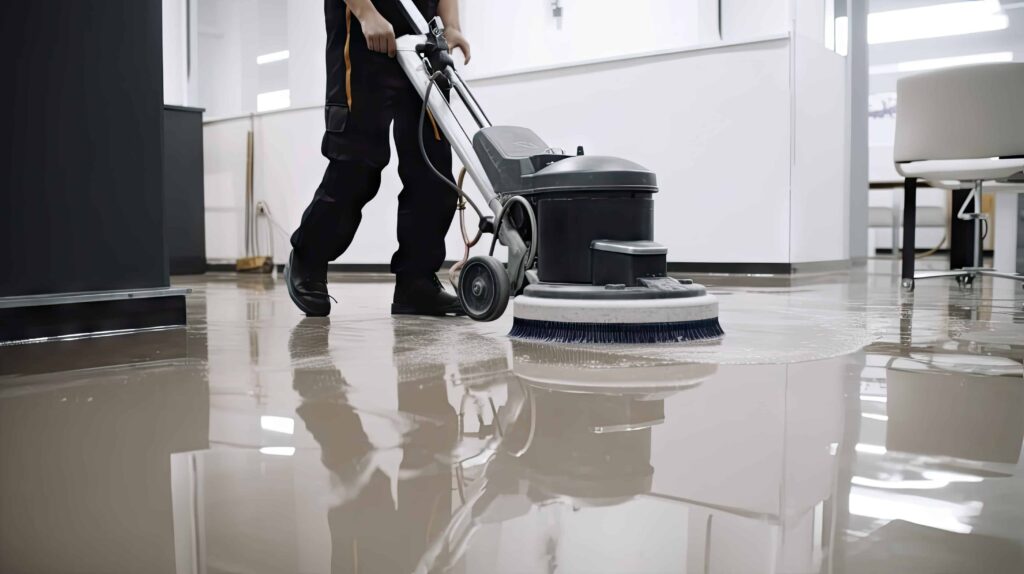Air Compressor Maintenance Checklist

Discover the essential air compressor maintenance checklist and best practices to ensure optimal performance and keep your air compressor in top condition.
Maintenance checklists are an essential component of any facility’s maintenance regimen. Air conditioning checklists, air compressor checklists, and HVAC maintenance checklists are all excellent examples of this. Regular air compressor maintenance is essential for ensuring a smooth-running compressed air system. A comprehensive air compressor maintenance checklist is key to securing an efficient and effective air compressor system. This guide will outline the steps for proper air compressor maintenance and provide helpful advice on building your facility’s air compressor maintenance checklist.
Understanding the Basics
As with the challenges with air conditioning units, neglecting the routine maintenance of air compressors can lead to clogged air filters, sluggish operation, and air pressure loss. A well-planned air compressor maintenance routine is essential for ensuring effective performance and the long life of your organization’s air compressor systems.
Importance of Air Compressor Maintenance
An air compressor maintenance checklist ensures consistent air compressor upkeep. Routine air filter maintenance ensures your unit operates safely and effectively, reducing the chance of breakdowns, which helps minimize downtime overall.
Components of Air Compressor
Air compressors are complex devices that contain many parts working together. Except for tankless air compressors — which don’t have a tank — air compressors typically contain these key components.
Filters: Air filters keep contaminants from entering the airflow. Oil filters prevent lubricants from being introduced into the airline, and panel filters protect electronic controls. Look at ServiceChannel’s air filter maintenance checklist for additional guidance on air filter upkeep.
Pump: A motor drives a pump to draw in air from outside and force it into the airflow system.
Valves: A check valve allows air flow in only one direction. Many tank air compressors also possess a drain valve to help expel fluids from the air compressor system.
Pressure switch: This internal switch ensures the tank doesn’t overfill and activates the air compressor pump when the internal tank pressure drops below its ability to provide air.
Tank: A tank air compressor has a tank containing compressed air.
Air Compressor Maintenance Checklist
An air compressor maintenance schedule typically involves daily, weekly, monthly, and quarterly or annual air compressor maintenance tasks. The longer the interval, the more formal the maintenance tasks will tend to be. It’s important to perform all scheduled maintenance tasks on air compressors to reduce the likelihood of breakdowns and safety hazards.
Daily Maintenance Tasks
Check oil levels, drain moisture buildup, and examine air compressors for leaks every day or with every use.
Weekly Maintenance Tasks
Each week, clean the air compressor intake and check the valves. Check the drive belts’ condition and ensure that motor bearings are properly lubricated.
Monthly Maintenance Tasks
Change air compressor oil filters every month and analyze oil samples. Examine the air compressor’s coupler and shaft seals to reduce the potential for air leaks.
Quarterly and Annual Maintenance Tasks
Each quarter, change out the oil/water separators on air compressors. Inspect check valves and conduct thorough overall system checks. If you don’t attend to these air compressor maintenance tasks each quarter, they must be performed at least once a year.
Best Practices for Air Compressor Maintenance
Incorporating these practices into an air compressor maintenance routine helps ensure a long lifecycle and a reliable air compressor system.
Schedule Professional Inspections
Regularly scheduled professional air compressor inspections dramatically improve the chances of catching hard-to-spot issues. Call in qualified technicians to perform advanced maintenance and complex repairs on air compressors.
Ensure Proper Lubrication
Inspect and manually check bearings and other moving air compressor parts for proper lubrication to reduce friction and heat.
Conduct Routine Inspections
Regularly look over air compressors to identify issues. Note any discoveries, such as air leaks in pressure relief valves, worn-out hoses, and signs of equipment damage.
Preventative Maintenance
Perform routine air compressor preventive maintenance. Replace dirty filters and worn parts, and inspect and test the compressed air systems for any potential issues.
Leverage Asset Management Systems
Asset management software systems enable you to set reminders and streamline air compressor maintenance tracking.
Implementing an Air Compressor Maintenance Plan
Establish a preventative maintenance strategy and develop a planned maintenance guide. Businesses can ensure air compressor longevity and optimal performance by implementing an equipment maintenance plan. Include these elements in your air compressor maintenance plan.
1. Evaluate Air Compressor Systems
Inspect and test all air compressor systems to assess their current condition.
2. Define Maintenance Goals
Determine all air compressor maintenance goals for your organization. Such goals might include reducing downtime, extending the air compressor’s lifespan, and improving the efficiency of your air compressors.
3. Craft a Maintenance Schedule
Establish how often you will perform each air compressor maintenance task. Break maintenance schedules up by daily, weekly, monthly, and quarterly/annual responsibilities. Determine which personnel will perform each task and assign them appropriately.
4. Use a Monitoring System
Determine key performance indicators (KPIs), such as temperature, pressure, and energy consumption. Establish optimal ranges for each and monitor air compressor systems to ensure they operate within established parameters.
5. Document and Analyze Data
A potent software solution such as ServiceChannel is an ideal tool for collecting and analyzing data from industrial air compressor systems. Such software can assess information and identify trends, recurring issues, and areas for optimization, from gauging oil filter efficiency to detecting intermittent compressed air flow disruptions.
The Benefits of Regular Air Compressor Maintenance
Regular air compressor preventive maintenance offers several advantages. Adhering to an effective plan improves equipment performance, ensures compliance with industry regulations, and provides a safer working environment.
Extended Lifespan
Regularly performing preventative maintenance dramatically reduces wear and tear damage, extending the longevity of air compressors.
Reduced Downtime
Diligent preventive maintenance helps reduce breakdowns and resulting operational downtime by addressing issues before they can lead to major disruptions in production.
Cost-Effectiveness
Proper maintenance ensures safety and cost-effective operation. Air compressors run more smoothly, reducing hazards and lowering annual energy costs because equipment doesn’t have to work as hard.
Cool, Calm, Compressor: Unleash Proper Maintenance with ServiceChannel
Incorporate these maintenance practices into your business operations and enjoy the benefits of a smooth operation. A robust facility management software solution like ServiceChannel can streamline your maintenance program with powerful analytic, monitoring, and scheduling capabilities. Look into the ServiceChannel platform and schedule your demo today.



